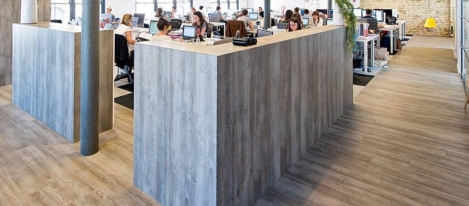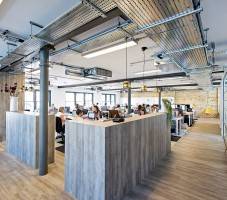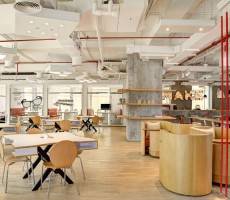August 5, 2015
Special edition of Ergonomics in Design focuses on sedentary work 0
 The Human Factors and Ergonomics Society (HFES) has published a special edition of its in-house journal dedicated to the much discussed topics of sedentary working and the need for us to get out of our seats. You’ll have to pay for it however, although individual sections are available for a one off cost. HFES claims to be the world’s largest scientific association for human factors and ergonomics professionals, with more than 4,800 members worldwide. The July issue of their journal Ergonomics in Design looks at the range of ailments associated with sedentary working, including obesity, heart disease and diabetes, weighs up what can be done to change the way people work, as well as the benefits and possible downsides to the most commonly suggested solutions, including sit-stand workstations, alternative seating designs and – God help us – treadmill desks.
The Human Factors and Ergonomics Society (HFES) has published a special edition of its in-house journal dedicated to the much discussed topics of sedentary working and the need for us to get out of our seats. You’ll have to pay for it however, although individual sections are available for a one off cost. HFES claims to be the world’s largest scientific association for human factors and ergonomics professionals, with more than 4,800 members worldwide. The July issue of their journal Ergonomics in Design looks at the range of ailments associated with sedentary working, including obesity, heart disease and diabetes, weighs up what can be done to change the way people work, as well as the benefits and possible downsides to the most commonly suggested solutions, including sit-stand workstations, alternative seating designs and – God help us – treadmill desks.






















 TechNorth, the Manchester based technology hothouse devised as a regional counterbalance to London, is held in higher regard than the capital’s flagship TechCity development, according to research from recruitment firm Robert Half. The study of IT decision makers across the UK claims that the vast majority would prioritise working with Northern firms over their London counterparts, with 87 percent either ‘highly likely’ or ‘somewhat likely’ to place work with IT businesses in the TechNorth hub rather than those in TechCity London given the choice. The figure is 100 percent for IT leaders based in the North and to 95 percent for those in Scotland. More surprisingly, 80 percent of those based London and the South East said they would prioritise TechNorth, as did 75 percent in the South West and Wales.
TechNorth, the Manchester based technology hothouse devised as a regional counterbalance to London, is held in higher regard than the capital’s flagship TechCity development, according to research from recruitment firm Robert Half. The study of IT decision makers across the UK claims that the vast majority would prioritise working with Northern firms over their London counterparts, with 87 percent either ‘highly likely’ or ‘somewhat likely’ to place work with IT businesses in the TechNorth hub rather than those in TechCity London given the choice. The figure is 100 percent for IT leaders based in the North and to 95 percent for those in Scotland. More surprisingly, 80 percent of those based London and the South East said they would prioritise TechNorth, as did 75 percent in the South West and Wales.









August 2, 2015
Female bosses enhance workforce engagement and motivation
by Gill Buchanan • Comment, Flexible working, Wellbeing, Workplace
(more…)